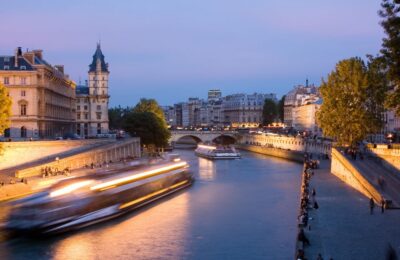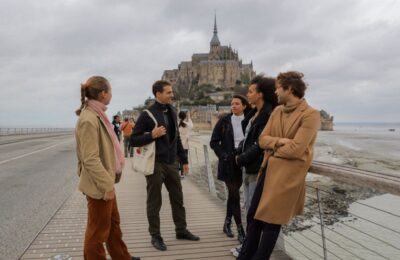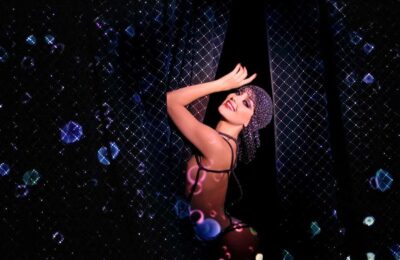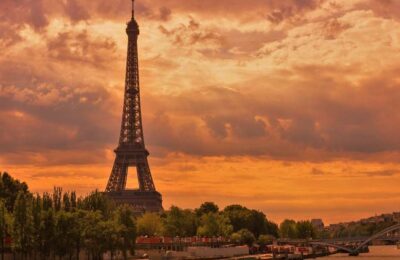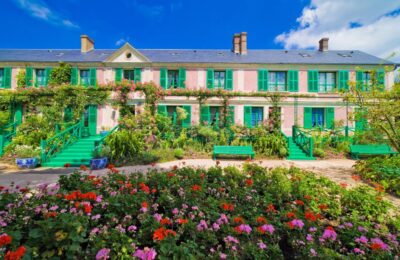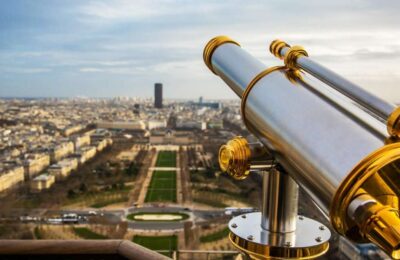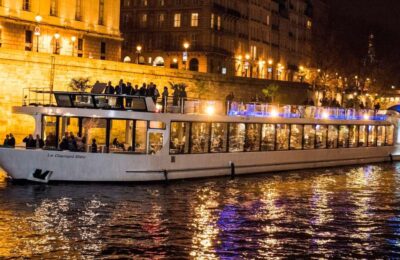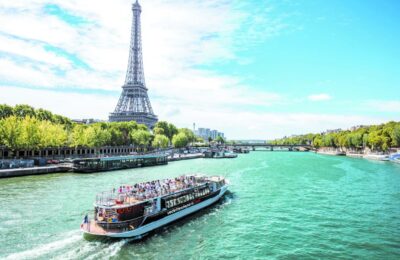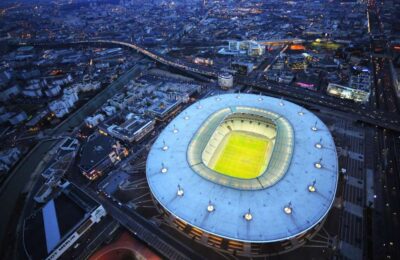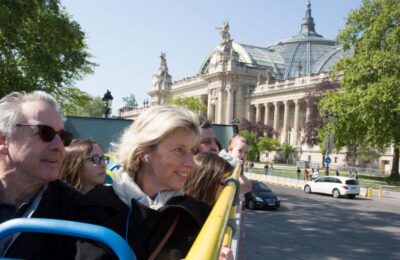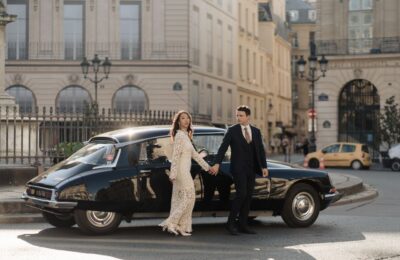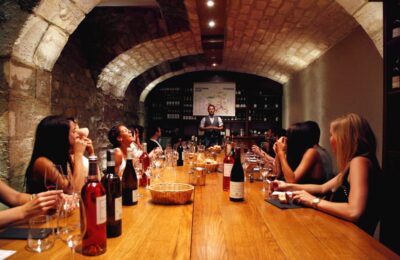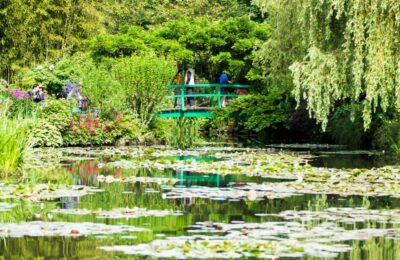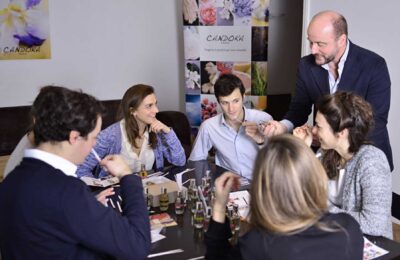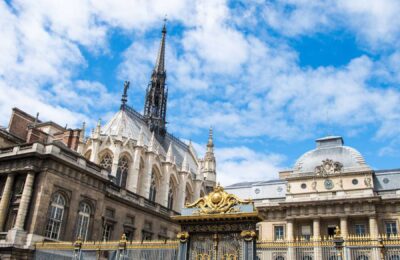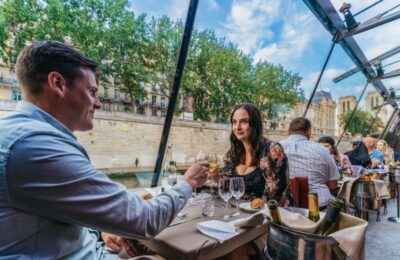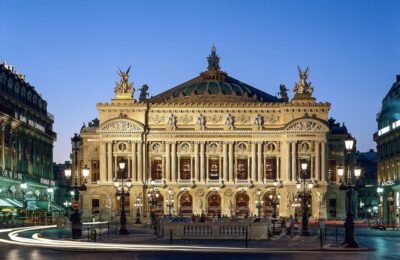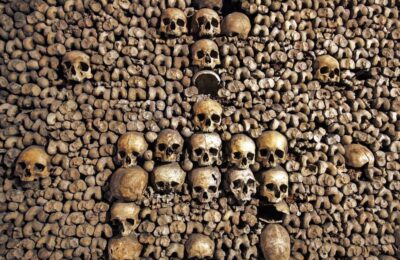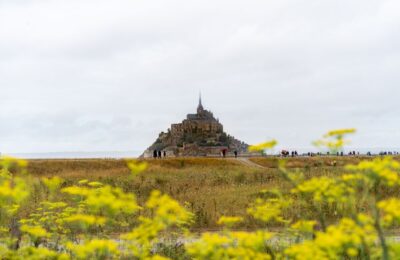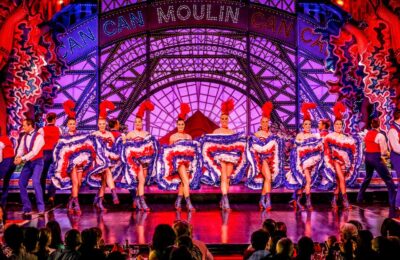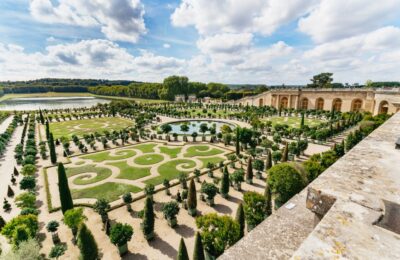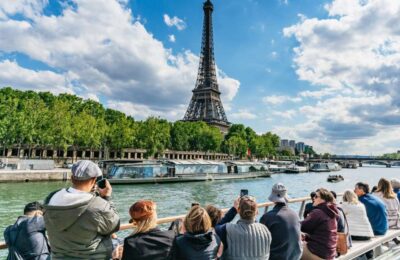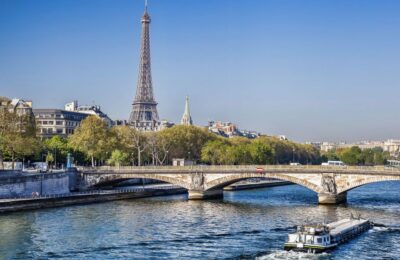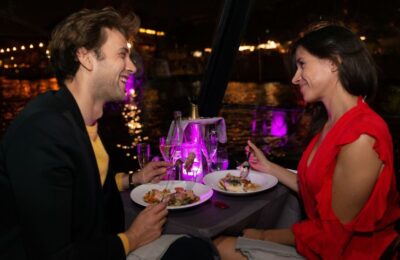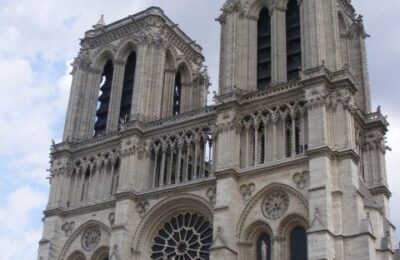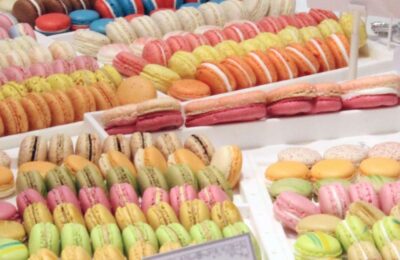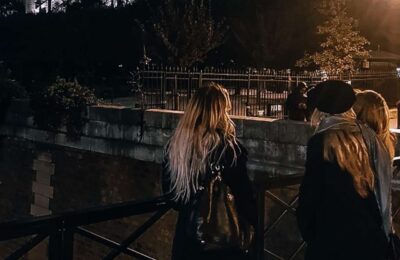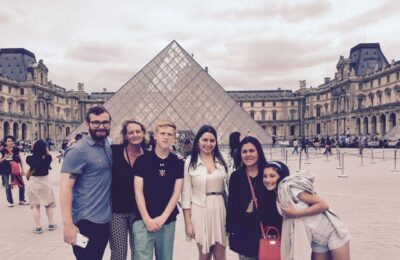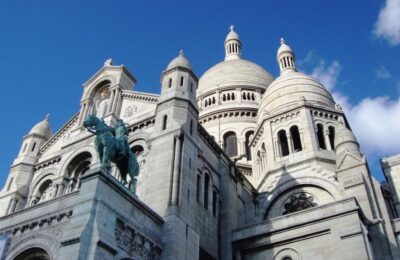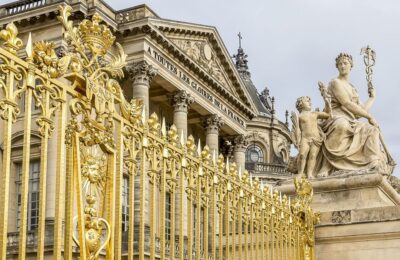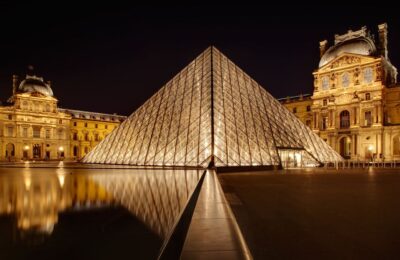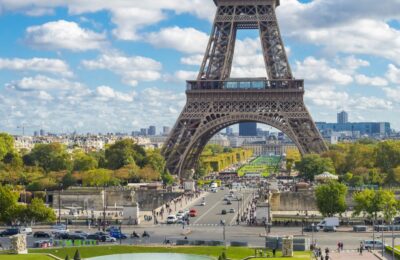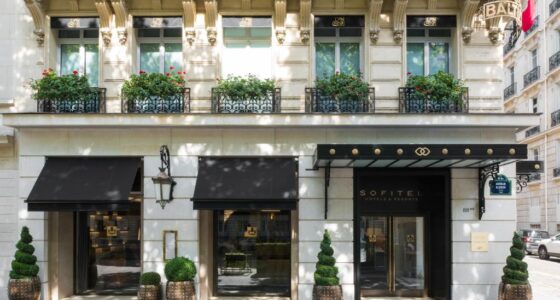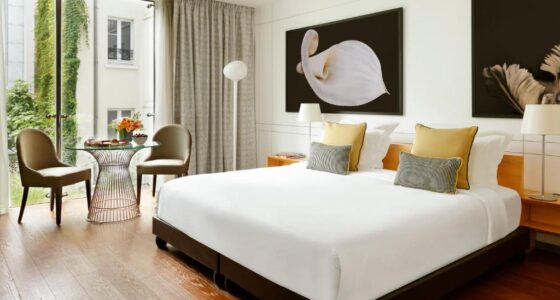If the sun is shining on the terraces of the cafes of Boulevard Saint-Germain, or melancholy fogs from the Seine River are shrouding Notre-Dame Cathedral, Paris has a way to charm tourists. The love affair could begin with the first glance at the Eiffel Tower. Then take a stroll along the broad avenues of trees, and then in extravagant formal gardens.
Tourists are enticed by the city’s splendor. Every area ( quartier) is unique in its own way. In the Latin Quarter is a captivating maze of medieval pedestrian streets and narrow streets. The trendy Champs-Elysees is alive with energy and style. Away from the heart of Paris, Montmartre brims with the charm of a village from the past and showcases it’s Bohemian past.
After touring the monuments and museums, tourists should look for little surprises, such as family-owned restaurants with menus written in handwriting and cobblestone streets brimming with charming boutiques; small squares decorated with flowing fountains and elegant tea bars with delicate, jewel-like desserts that are awaiting you from pastry cases covered in glass.
In every secret corner and in all the famous places, Paris casts a spell of fascination. A single visit could spark an unending fascination.
Find out what is what makes Paris the City of Light so alluring and discover the intriguing destinations to visit through our guide of the top tourist destinations in Paris.
Check out: Where to Stay in Paris
1. Eiffel Tower
It is believed that the Eiffel Tower (la Tour Eiffel) is a top pick among the top places to go to within France as it is also the most frequented tourist attraction worldwide. It’s hard to believe it was considered an unimaginable structure at the time it was first revealed. The tower’s iconic design was created by the architect Alexandre-Gustave Eiffel to commemorate the Paris Exhibition of 1889 that marked the centennial celebration of the French Revolution.
The tower is comprised of 18,000 strong iron sections (weighing more than 10,000 tons) connected through 2.5 millions of rivets. This unique structure is thought to be an architectural masterpiece that is also the largest and most recognizable site in Paris. At 324 metres in height The tower was the highest building in the world before the Empire State Building was erected in New York City.
If you are a first-time visitor, seeing the Eiffel Tower is an unforgettable experience. On arrival on the Esplanade (where you will find the Information Desk is located) The sight of those four massive columns supporting the towering structure of 10,100 tons leaves visitors amazed.
The recently restored gardens of the Eiffel Tower that surround the esplanade are beautiful landscaping that is that is in the Belle Epoque style. The lush trees shade the pedestrian paths that meander through the gardens , leading to a grotto, ponds and belvederes that offer views at The Iron Lady.
For access to the Eiffel Tower’s upper level (at 57 metres) will require an elevator or climb to the top of the stairs, which are 360 feet. The level offers bathrooms for the public as well as a gift shop, Brasserie restaurant, cafeteria (currently being renovated and scheduled to reopen by 2022) and an the outdoor terrace area for enjoying the views.
The second floor (at about 125 metres) at 125 meters is accessible from the top level via an additional 344 steps or via an elevator ride. The second level is equipped with the same facilities as the first but the viewing platforms give views than the Paris landmarks (such as Notre-Dame as well as the Louvre and the Basilique du Sacre-Coeur), and also the restaurant with fine dining.
This Michelin-starred restaurant located on the second floor, Le Jules Verne, offers exceptional meals in gastronomy of sophisticated contemporary French food in a stunning setting. The dining areas of the restaurant are adorned with large windows that offer views at the tower’s structure beams, and overlook the Paris landscape. Paris.
To reach the top of the hill with a staggering elevation of 276 meters, you must take an exhilarating ride on the elevator from the 2nd level. The top floor is among the most thrilling things you can do in Paris but it’s not for those who aren’t brave enough.
Tourists are likely to want to take some time for pictures. At either Jardins du Trocadero (a short stroll across to the Seine River) or the Parc du Champ of Mars (the lawns to the out in front of the Tower) There is the right spot for perfect photographs.
Address: Tour Eiffel, Champ de Mars, 75007 Paris (Metro: Bir-Hakeim, Trocadero, Iena, or Passy station)
2. Musee du Louvre
A luxurious palace once residence of the French kings The Louvre is one of the most famous of Paris the most renowned museums. Visitors can enter the museum through an area of courtyard in the Palace, which is the Pyramid du Louvre which is a glass-clad pyramid that was designed for the museum by Ieoh Ming Pei in the year 1917. It is the Musee du Louvre displays thousands of paintings and many of them are considered masterpieces, ranging from antiques to European paintings from the 15th and 19th centuries.
It’s difficult to take in everything in one trip however, visitors can concentrate on one particular gallery, for instance, the classical art of sculpture Italian Renaissance art, or 17th-century French paintings, or even take an independent tour that covers the Louvre Museum’s top attractions.
The most famous work can be found in the Mona Lisaor La Gioconda (or La Jocondein French) painted by Leonardo da Vinci in 1503-1505. A lot of visitors walk through the museum only to take a look at this particular work, but there are many other important masterpieces of art to look at even when time is short.
One of the most impressive masterpieces at the Louvre include the ancient Venus de Milo statue and the massive Victoire de Samothrace of the Hellenistic period; the enormous Wedding Feast at Cana painting by Veronese (1563) and Botticelli’s Young Lady with Venus and the Graces fresco and Liberty leading The People (1831) from Eugene Delacroix, depicting the Parisian revolt of July 1830.
To get the most value of a trip to the Louvre it is recommended that visitors join the guided tour. It is the Louvre museum skip the line tour will take visitors straight into the Museum’s top well-known works of art, such as those of Venus de Milo and the Mona Lisa. In this three-hour tour the guides (who has a background in art history) gives a detailed explanation of the works of art.
The Louvre is located in the Jardin of Tuileries which is one of the most beautiful park in Paris. The famous Landscape architect Andre Le Notre created the Tuileries Gardens in the formal French style in the 17th century with beautifully well-maintained trees, statues, and paths. Cafe restaurants and park benches with outdoor seating enable guests to sit back and relax while enjoying the views.
Address: Musee du Louvre, Rue de Rivoli, 75001 Paris (Metro: Palais-Royal Musee du Louvre or Pyramides station)
3. Cathedrale Notre-Dame de Paris
Notre-Dame is situated in the middle of Paris in the Ile-de-la-Cite close to the Latin Quarter. A small island situated in the Seine River, the Ile-de la-Cite is the historic and geographic center of Paris. In this tiny piece of land there was a settlement of the Romans constructed the Gallo-Roman city of Lutetia in the 6th century until in the 14th century kings of France resided there.
The Cathedrale Notre-Dame de Paris was established on 1163 under the reign of King Louis IX (Saint Louis) and Bishop Maurice de Sully, and it took more than 150 years. The cathedral was originally built in the Early Gothic style, while later extensions (the West Front and nave) are evidence of the shift into High Gothic style.
The impressive monument to medieval times is a masterpiece in Gothic architecture. The intricately decorated façade creates an impressive impression thanks to the plethora of gargoyles and sculptures, as well as intricate flybuttresses ensure structural stability for the massive structure.
Visitors are encouraged to take a close inspection of it. Gallery of Kings over the doorway of the lavishly detailed west facade. The intricately carved characters show depictions of French King’s reign starting all the way from Childebert I (511-588) to Philippe Auguste. The heads of these figures were lost at the time of the Revolution. (The heads are displayed at the Musee of Cluny.)
After admiring the beautiful entranceway and the beautiful entranceway, you can enter the sanctuary to be amazed by the beauty of this vast vaulted area. The space seems to be endless and is beckoning visitors by the flickering light of candles.
The interior is lit up by beautiful stained-glass window. The most noteworthy window is the rose window in the north transept. The amazing work of art displays more than 80 Old Testament scenes centered around the Virgin.
Notice: A major fire in the month of April in 2019 caused significant damage to the cathedral. The medieval roof as well as the 19th century spire fell. The severity and extent being determined. As of now, the inside is not accessible to the public.
The project to repair and stabilize the structure is currently in process. The city is planning to build a new cathedral and restore it back to the original condition. Restoration work is currently underway.
When the church reopens on the 1st of March, during the time of the closure, the Notre-Dame de Paris congregation will be celebrating Mass in the Eglise Saint-Germain l’Auxerrois (2 Place du Louvre) located in the 1st arrondissement.
Address: Cathedrale Notre-Dame de Paris, 6 Parvis Notre-Dame – Place Jean-Paul II, 75004 Paris (Metro: Cite or Saint-Michel Notre-Dame station)
4. Avenue des Champs-Elysees
The most famous boulevard in Paris was once a barren marshland-like field up to the 17th century in which time it was transformed with the help of Andre Le Notre. In the following century it was The Parisian City Planner Baron Haussmann designed the boulevard’s exquisite structures.
The Champs-Elysees is divided into two parts, with the Rond-Point of the Champs-Elysees as the intersection.
The lower section of the Champs Elysees, which borders to the Place de la Concorde is a large park with the Jardins of Champs-Elysees and the Petit Palais fine art museum. The upper section, stretching towards beyond the Arc de Triomphe is lined with luxury stores and restaurants, hotels cafes, cinemas and theatres. The area is bustling with tourists , and is a popular spot for Parisians.
The Champs Elysees is known for its famous establishments including Maison Laduree (75 Avenue of Champs-Elysees) which is a patisserie store known for its 18th-century tea salon, delicious pastries and tea (the speciality of the house”macarons”) “macarons”), and high-end designer boutiques such as Tiffany & Co. (62 Avenue des Champs-Elysees), Louis-Vuitton (101 Avenue des Champs-Elysees) and Cartier (154 Avenue des Champs Elysees).
For gourmet dining, the top options are the legendary “brasserie du luxe” restaurant and the hotel Le Fouquet’s (99 Avenue des Champs-Elysees) and the elegant Gastronomic Restaurant The L’Atelier de Joel Robuchon Etoile (30 Rue Vernet, a small side street that lies behind the avenue des Champs-Elysees) that has one Michelin star.
Although the Champs Elysees have an image of luxury but there are plenty of budget establishments that cater to those who are who are on a tight budget, including McDonald’s, the Disney toy store Starbucks, Quick, Burger King and McDonald’s.
Address: Avenue des Champs Elysees 70808 Paris (Metro: Champs-Elysees Clemenceau station for a visit to the Jardin des Champs-Elysees , and Petit Palais, Franklin d. Roosevelt station for Laduree, George V station to access the main shopping zone).
5. Musee d’Orsay
The Musee d’Orsay displays a splendid collection of 19th and 20th-century artwork (created between 1848 and 1914) inside the newly renovated Gare d’Orsay. The Belle Epoque railway station was built to host it to host the Universal Exhibition of 1900.
The world’s most treasured artworks are displayed in the museum’s vast galleries. It is worth a visit to the Orsay museum is one of the top places to go in Paris to gain a better understanding in Impressionist art art history. Visitors are amazed by the variety of paintingson canvases that show the soft pastel hued brush strokes Monet to the vivid, vibrant paintings of Gauguin.
The collection focuses on the work of the Impressionist masters. The artists included span Master Impressionists like Edgar Degas, Edouard Manet, Claude Monet, and Auguste Renoir to Post-Impressionist artists like Pierre Bonnard, Paul Cezanne as well as Vincent van Gogh; the Pointillists (Georges Seurat, Paul Signac); and Bohemian artists such as Henri de Toulouse-Lautrec.
The museum’s most famous works include Monet’s The Magpie, Gare Saint-Lazare, Poppy Field, and Luncheon on the Grass. Vincent van Gogh’s self portrait and Starry Night; and Renoir’s Dance at Moulin de la Galette, that depicts a celebration setting in Montmartre.
The museum also houses an onsite bookstore and gift shop as well as a cafe that is casual, and a fine dining restaurant, that is well worth the money. The museum was previously it was the Hotel d’Orsay (a luxury hotel inside the Gare d’Orsay) Gare Orsay) and designated as an Historic Monument, the museum’s restaurant has gilded ceilings as well as glittering chandeliers.
Address: Musee d’Orsay, 1 Rue de la Legion d’Honneur, 75007 Paris (Metro: Musee d’Orsay, Assemblee Nationale, or Solferino station)
Official site: https://www.musee-orsay.fr/en/
6. Palais Garnier, Opera National de Paris
In the hands of Napoleon III in the year 1860, The Palais Garnier Opera House was constructed in 1862 by Charles Garnier in an exuberant Baroque style. Garnier dedicated himself to the building for nearly 10 years, from 1862 until 1875. This iconic landmark is a symbol of the Napoleonic Imperial regime.
The facade is decorated with classical columns as well as eight sculptures depicting allegorical characters that include Music, Poetry, Idyll, Recitation, Drama, Song and dance. The loggia features sculptures of composers like Rossini, Beethoven, and Mozart The cupola is decorated with the statue of Apollo and allegorical images from Poetry and music.
On entering the building visitors are amazed by the impressive 11,000 square meters of interior. A large portion of the interior is devoted to the main foyer and its stunning Grand Escalier, marble staircase that is adorned by gilded, ornate chandeliers.
The horseshoe-shaped theater has an intimate atmosphere, even though it can seat 2,105 patrons in its comfortable red velvet seats. Balconies with gilded balconies, a massive crystal chandelier, as well as the Chagall mural on the ceiling are all part of the beauty of the theater, making an ideal backdrop for cultural events.
The Opera Garnier hosts a highly regarded schedule that includes a variety of special events. In addition to ballet, there are opera performances as well as classical music concerts galas, and other events. Going to a show is one of the most thrilling activities that you could do while in Paris in the evening. It’s also an excellent opportunity to view the building’s interior and enjoy a fabulous evening. A different option would be to go (entry ticket is required) or go on a tour with a guide in the time of day.
The Library-Musee de l’Opera (Library-Museum of the Opera) is located within the building houses three centuries of archives along with exhibits dedicated to opera’s art. The museum’s permanent collection includes sketches of costumes and scenery scale models, as well as paintings of the building.
The Opera House also has a boutique that sells books on opera and other souvenirs.
Foodies who love exquisite dining will be pleased to find CoCo the chic restaurant located inside the Opera House (entrance is at 1 Place Jacques Rouche) that offers refined contemporary food made with fresh ingredients. CoCo serves lunch and dinner every day, and also weekends breakfast (every every Saturday, and on Sunday) that includes live entertainment. Reservations are strongly recommended.
Address: Palais Garnier, Place de l’Opera, 8 Rue Scribe (at Auber) 75009 Paris (Metro: Opera, Chaussee d’Antin-La Fayette or Havre-Caumartin station)
Official site: https://www.operadeparis.fr/en/
7. Place de la Concorde
In 1772, an architect for King Louis XV, this impressive oval square was the center of the 18th century in Paris. It was the Place de la Concorde was the site of many important historical events, such as those executed by Louis XVI and Marie-Antoinette, as well as other victims of the Guillotine. The square also formed part of the Napoleonic triumphal route.
With its magnificent dimensions, it is the Place de la Concorde is one of the most beautiful squares in the city . It gives a breathtaking view of the city’s iconic landmarks. On one hand, you will be able to look out over the Arc de Triomphe and, to the left it is it is the Louvre and you can see the Eiffel Tower is visible from a distance. The center of the building there is an Egyptian Obelisk which was gifted by Charles X by the Viceroy of Egypt. In the summer months, there’s the Ferris wheel.
A tip for tourists: Place de la Concorde is an extremely busy intersection that is crowded with traffic moving around at the speed of light. French drivers do not always pay the attention of pedestrians, and tourists must move away from the road!
To get to Place de la Concorde Place de la Concorde, take a walk to towards the Louvre via to the Jardin des Tuileries or the Rue de Rivoli, or take the Quai to towards the Seine River. You can also use Metro Metro up to Concorde station.
8. Arc de Triomphe
The Arc de Triomphe is dedicated to the soldiers who served in the French army during the Revolution and during the First Empire (Napoleonic Wars). Napoleon was the first to order the construction of this magnificent structure in 1806 however he didn’t live to see the building’s completion until 1836.
Designed by architect Jean-Francois Chalgrin, who modeled the monument after the Arch of Titus in Rome, the massive 50-meter-high arch features bas-reliefs with larger-than-life-size figures, which depict the departure, victories, and glorious return of the French armies.
Particularly noteworthy is the bas-relief by Francois Rude on the Champs-Elysees-facing side: Departure of the Volunteers of 1792, also known as La Marseillaise, illustrating the troops led by the winged spirit of Liberty. On the inside that surround the arch is the name of over 660 Generals as well as more than 100 battles.
From the highest point of the monument the observation platform offers breathtaking views of the twelve avenues radiating out from Place de l’Etoile, including the avenue that runs that runs from through the Avenue des Champs-Elysees to the Place de la Concorde and the Louvre. You’ll be able to look out towards La Defense, the hilltop neighborhood of Montmartre as well as Montmartre’s Eiffel Tower.
The foot of the Arc de Triomphe is the Tomb of the Unknown Soldier which was inaugurated in 1921 to be a tribute to an unidentified soldier (symbol of the numerous unknown soldiers who bravely sacrificed their lives for their country during World War One without ever being recognized).
The Flame of Remembrance was lit in the Tomb of the Unknown Soldier on the 11th November, 1923, and has never been snuffed out. Every night at 6:30 pm an evening ritual is performed to ignite the flame of the memorial at the tomb.
All through the year, celebrations to celebrate national holidays are celebrated in the arc de Triomphe and include the 11th of November (anniversary of Armistice of 1918) ceremony paying tribute to those who lost their lives during the conflict as well as The April 8 Fete de la Victoire (Victory Day) celebration of the conclusion of WWII and the liberation of Nazi occupation, in addition to celebrations to celebrate Jul 14 (Bastille Day).
The staff at the monument offers tour guides in French every day from 10:30 am. These guided tours come with the cost of admission tickets. The website also offers documents and multimedia presentations in several languages.
Tourists will enjoy shopping in the shop for gifts and bookshop in the Arc of Triomphe. For those who have mobility issues and children who are young there’s an elevator that leads to an observation platform. If not, visitors have to use the stairs.
Address: Arc de Triomphe, Place Charles de Gaulle, 75008 Paris (Metro: Charles de Gaulle-Etoile, Kleber or Argentine station)
9. Seine River Cruises
A boat ride along the Seine River is one of the most effective ways to take in the stunning landscape of Paris. Seine River Cruises let visitors to view the city from a different angle. It is possible to see the Seine River bridges, Eiffel Tower, Notre-Dame Cathedral, and the Louvre Museum appear amazing from the perspective from the riverboat.
While a cruise during the day permits visitors to take in the beauty of monuments glistening in sunlight the most romantic time is a night cruise. At sunset, the city’s landmarks get illuminated creating a stunning look, and makes the city appears more magical.
If you’re looking for a cruise that includes dinner, consider the Bateaux Seine River in Paris Gourmet Dinner and Seenseeing Cruise. The luxurious riverboat cruise starts from the Port de la Bourdonnais (near the Eiffel Tower) and passengers will be treated to a delicious three-course dinner.
Gourmands may be enticed to enjoy a culinary cruise aboard the Ducasse sur Seine restaurant boat that leaves from Port Debilly. The restaurant is unique and offers an opportunity to sample some of the best haute cuisine available in Paris as you cruise along the Seine River past some of the most magnificent monuments in Paris. The guests can select between dinner cruises and lunch cruises and there are a variety of menus that are available. Menus feature contemporary French cuisine that is prepared using fresh ingredients.
10. Musical Concerts at Sainte-Chapelle
Sainte-Chapelle is regarded as a unique treasure among the churches of the medieval period and is definitely among the most beautiful church buildings that can be found in Paris. The beautiful 13th-century chapel is located in the Ile-de-la-Cite and is only a few steps (about 10 minutes walking) away from Notre Dame Cathedral.
This work is a masterpiece of Rayonnant Gothic architecture and was built between 1242 and 1248 by King Louis IX (Saint Louis) to store the precious relics he obtained from his father, the Byzantine Emperor. The altar houses the relics of the Crown of Thorns.
The chapel is famous for its stunning stained-glass window that gives the chapel a tranquil atmosphere. (Visit at the beginning of the day and particularly on sunny days to admire the windows in their best.) The chapel houses 15 stained glass windows (covering 600 square meters) with over 1,000 biblical scenes and the bible, both Old Testament and New Testament stories. The light and colors symbolize divinity as well as heaven. Heavenly Jerusalem.
It is only used for church services on very rare times, Sainte-Chapelle is open to visitors as museums (entrance ticket is required). In addition to the admission fee, audioguides (available in French, English, German, Italian, Spanish, and Japanese) give one hour of information to help visitors understand the art, architecture and the history of Sainte-Chapelle.
This magnificent monument is an ideal concert venue for classical music. With the shimmering light of the magnificent sanctuary, performance that include Baroque classical music and chamber ensembles, as well as sacred music as well as Vivaldi string quartets are of stunning quality. Regularly scheduled concerts are held at Sainte-Chapelle all year round, with events regularly scheduled.
Sainte-Chapelle is located inside The Palais de la Cite. To locate the chapel, walk through via the gate made of iron in the Palais de Justice and walk through the courtyard.
Another popular attraction is nearby is La Conciergerie (tourists are able to buy tickets that combine entry) The prison in which Marie-Antoinette was held throughout Marie-Antoinette’s detention during the French Revolution.
Address: Sainte-Chapelle, 8 Boulevard du Palais, 75001 Paris (Metro: Cite, Saint-Michel Notre-Dame or Chatelet station)
11. Bustling Boulevards and Legendary Cafes
A trip in The City of Light is not enough without a stroll on the street or the lively interior of a renowned cafe. It’s the best Parisian crowd-watching experience and the perfect opportunity to imagine the romantic meeting that took place in this area.
To discover the legendary Paris cafes, the best place to start is the Boulevard Saint-Germain-des-Pres in the 6th arrondissement. The boulevard, which is lined with trees, is lined with shops, exclusive brasseries and cafes that are a century old.
The most celebrated cafes are the Cafe de Flore (172 Boulevard Saint-Germain-des-Pres), which was the meeting place of Jean-Paul Sartre and Simone de Beauvoir, and Les Deux Magots cafe (6 Place Saint-Germain-des-Pres), once the haunt of poets, authors, and artists, including Arthur Rimbaud, Paul Verlaine, James Joyce, Pablo Picasso, and Ernest Hemingway.
In the two cafes, Cafe de Flore and Les Deux Magots visitors get a traditional Parisian cafe experience including waiters who wear bow tie. Although waiters enjoy a reputation for their rude manner of service, they are formal and contributes to the authentic atmosphere.
The brasseries in Boulevard du Montparnasse were frequented by famous writers and artists. Le Domein Montparnasse is an iconic Paris landmark (108 Boulevard du Montparnasse) that has attracted famous people like Sartre, Simone de Beauvoir and Picasso. The restaurant is a glitzy Art Deco dining room, the restaurant serves exquisite cuisine and is particularly famous for its seafood offerings.
Another intriguing French brasserie with a mystical history, La Coupole (102 Boulevard du Montparnasse) has since the 1920s been frequented by famous artists like Andre Derain, Fernand Leger, Man Ray, Pablo Picasso as well as Marc Chagall. La Coupole also boasts having been the home of Albert Camus and Jean-Paul Sartre.
La Rotonde Montparnasse (105 Boulevard du Montparnasse) is an area for artists as well as writers from 1911. The place continues to draw cinematographers and artists in the present.
12. Jardin du Luxembourg
An essential stop in the 6th arrondissement it is the Jardin Du Luxembourg has become the most well-known park in Paris following the Tuileries. It is the Luxembourg Gardens were created in the 17th century. they were built. The Palais du Luxembourg was built to honor the Queen of Medicis, Marie de Medicis. It was built by the King Henri IV, and they were designed following the model similar to the Boboli Gardens in Florence. The 19th century was when architects Jean-Francois Chalgrin updated the layout of the Jardin du Luxembourg.
The most prominent element of the park’s 25-hectare area is the huge octagonal fountain pool. It is surrounded by two terraces adorned with statues, neat flower beds, and maintained shrubs. This area of the park has the formal look of French gardens. The fountain is surrounded by a variety of chairs for visitors to sit on.
There’s also an English-style garden as well as a rose garden an apiary, an Orangerie (orangery) and greenhouses that are brimming with exotic orchids and an orchard, where the there are varieties of apple that are heirloom.
The gardens are filled with artifacts that can be found in the gardens, including the stunning seventeenth century Fontaine de Medicis the fountain basin that is tucked beneath trees, which is located opposite the east side of the Palais du Luxembourg which is now utilized for The French State as the place of the Senate.
A few steps of The Fontaine de Medicis, is La Terrasse of Madame which is a small cafe-restaurant with a lovely location. The restaurant’s outdoor seating allows diners to sit at tables under the chestnut trees. The menu offers croissants and coffee at breakfast, as well as bistro-style meals for lunch, including the steak the Croque Monsieur (sandwiches) as well as quiche and grilling fish, charcuterie and salads. There are also the traditional French desserts such as desserts like profiteroles and the crème creme brulee..
This park has become a favorite local spot to unwind and have picnics. Students from The Latin Quarter can be seen eating baguette sandwiches at lunch, or simply relaxing on a warm day. There are many opportunities for recreation, including the game of basketball tennis, and the game of chess.
Children are enthralled by the playground that includes swings and slide, a sandpit games area and pony rides. The most popular thing to do for the children who visit Jardin du Luxembourg Jardin Du Luxembourg to steer miniature sailing boats through the oval pool (the boats can be rented at a kiosk near in the water).
For kids who speak French, an evening of puppets at the Theatre des Marionnettesis unmissable. This Theatre des Marionnettes is a modern theater, located in the southwest part of the park close to the tennis courts. It is able to accommodate an audience of up to 275 kids and adults (which is the biggest puppet theatre that is located in France).
Address: Jardin du Luxembourg, Rue de Vaugirard and Rue de Medicis, 75006 Paris (Metro: Luxembourg or Odeon station)
13. Sacre-Coeur and Quartier Montmartre
It is situated at the highest point in Paris as an ornamental feature and a symbol of Paris’s grandeur, the Basilique du Sacre-Coeur is a symbol of Paris with an ethereal feel. The alabaster façade is a blend of Romanesque as well as Byzantine styles. From further away, it appears like the cake of a wedding (which is also its name).
In the Basilica, the stunning pattern depicting Christ with a fiery heart creates the spiritual and emotional vigor that is appropriate for a place which was built to symbolize optimism following the Franco-Prussian War. The sanctuary is lit with numerous candles, which offer an interesting contrast to the darkand dreary area.
Visitors can relax sitting on the terrace and enjoying the view from Paris or climb up the tower to get a better view. Its Esplanadethat takes you to the top (by an escalator with more than 200 stairs) up to Sacre-Coeur Church is an popular spot for those who want to relax and is frequently populated by street performers.
When you visit the Sacre-Coeur Be sure to take a stroll through the beautiful area that is Montmartre. The medieval village (once was considered to be outside of the city) has been incorporated as the 18th district of Paris.
Montmartre has a classic charm with an avant-garde twist. Cobblestone streets that wind around and stairs for pedestrians lead to local-owned restaurants and boutiques, art galleries which evoke the bohemian vibe of the district’s past, and tranquil spaces dotted of outside cafes.
In the Belle Epoque, the village of Montmartre started to draw artists like Henri de Toulouse-Lautrec and Edgar Degas. The Bohemian spirit of Montmartre is still evident in this area, particularly in the vicinity of Montmartre’s Place du Tertre and the Carre Roland Dorgeles.
The area is home to several great art museums where visitors can view the works of bohemian artists who lived in Montmartre in the late nineteenth and the beginning of the 20th centuries. In this time, Montmartre was famous for its cabarets and artist’s studios.
The Musee de Montmartre(12 Rue Cortot) occupies a historical home where Auguste Renoir, Raoul Dufy Suzanne Valadon, Raoul Dufy and many other artists resided and worked. In the beautiful gardens of the museum guests can relax and enjoy refreshments in Cafe Renoir. Cafe Renoir, that has outdoor seating in the beautiful area in which Renoir painted numerous paintings.
Anyone who is a fan of artistic surrealism will be fascinated at this Dali Paris museum (11 Rue Poulbot). This museum that is innovative displays more than 300 pieces that were created of Salvador Dali. The exhibits are arranged in a way that highlights the symbols and themes he that he used in his art.
Address: Basilique du Sacre-Coeur, 35 Rue du Chevalier-de-la-Barre, 75018 Paris (Metro: Abbesses)
14. Pantheon
It was built as a church to compete with Saint Peter’s Basilica in Rome and Saint Paul’s Cathedral in London The Pantheon is the mausoleum national of the greatest French citizens. In 1756 the king Louis XV commissioned the architect Jacques-Germain Soufflot (1713-80) to construct a new chapel on top of the destroyed abbey of Sainte-Genevieve and the church was completed in 1790.
The structure of the Pantheon is a stark departure from the fun Rococo style of Louis XV style and instead showcases a more basic and serene Neoclassical style. The text on the Pantheon’s façade is ” Aux Grands Hommes La Patrie Reconnaissante” (” To the Great Men Recognized by Their Country“).
A number of notable men (75 in all) are in this monument which includes philosophers Voltaire and Jean-Jacques Rousseau as well as Rene Descartes; and the writers Victor Hugo, Alexandre Dumas, Emile Zola, and Andre Malraux. Although the monument was initially solely dedicated to the French male population However, this has been changed in recent years.
Since 1995, many of France’s most revered female citizens have been laid to rest within the Pantheon including scientist Marie Curie, a two-time winner of the Nobel Prize. Five other women are also buried in the Pantheon. In the month of November, 2021, Josephine Baker (the famous Black American expatriate singer and dancer) was the 6th woman in history to be awarded the distinction of being admitted into the Pantheon.
The entrance to the Pantheon requires a fee for admission with the exception of free admission every Sunday each month between November and March. Guided group tours are offered all year long.
From April to the end of October (for an additional cost) Visitors can climb to the Pantheon’s dome which has a balcony with a colonnaded design that offers an amazing view of the city’s iconic landmarks. Panoramas span across towards Notre-Dame Cathedral and the Louvre in the background and the Eiffel Tower further away.
Address: Pantheon, Place du Pantheon, 75005 Paris (Metro: Luxembourg station)
15. Place des Vosges
In the beautiful Marais district In the charming Marais district, the Place des Vosges is Paris its oldest public square large and laid out in a harmoniously uniform design. The elegant square served as the basis for other squares, such as Place Vendome and Place de la Concorde.
The Place des Vosges was constructed between 1605 and 1612, and was initially referred to as Place Royale because it was conceived in 1605 by the the King Henri IV. The structures were originally noble residences. The square is typical of Renaissance architecture The square is an appealing symmetrical shape with uniform red-brick homes with stone quoins and the roof with pitched slate.
The Place Royale offered a splendid venue for events celebrating the holiday season in the 17th century like tournaments, state banquets, and court weddings. Also, it was a popular place for duels despite the ban imposed by Cardinal Richelieu on duels. The famous courtesan during the reign of Louis XIII lived at number 11 and Madame de Sevigne, who would later become the Madame came into the world in 1626 in the 1st at the corner.
Victor Hugo rented an apartment at 6 on the Place Royale between 1832 and 1848. The apartment is now an art gallery called it is called the House de Victor Hugo (6 Place des Vosges) which is dedicated to teaching people regarding the history and works of Victor Hugo.
It is the Place des Vosges is at the center of Le Marais, a medieval district with cobblestone streets narrow and narrow. extravagant Renaissance palaces and gorgeous hotels particulars (mansions) from seventeenth- and sixteenth century. Many of these magnificent older buildings have been turned into museums.
The most significant museum in this quarter of the city is Musee Carnavalet which is Histoire de Paris. The museum, which was recently renovated, traces the rich history of Paris from the time of antiquity to its period of the French Revolution and the Belle Epoque up to the present.
Within the Hotel Sale (a seventeenth century mansion of the aristocratic class) and the Musee National Picasso Paris (5 Rue de Thorigny) is awe-inspiring to modern art enthusiasts with its huge collection (over 5 000 objects) of Picasso’s work and includes some of his most well-known masterpieces.
More than an open-air museum that is filled with historical landmarks Le Marais has become an exciting area with chic cafes, trendy boutiques and quirky shops. The district is filled with energy and youthful enthusiasm. It’s an enjoyable place to go to stroll around or stop for a coffee.
Another interesting aspect of Le Marais is the fact that it is home to a large Jewish community. To find out more about Jewish traditions within Europe visitors can go to the Musee of Art and History of Judaisme (71 Rue du Temple) It is a museum that focuses on the heritage of France’s Jewish communities, as well as education programs about Jewish culture as well as exhibitions of works created by Jewish artists like Chagall as well as Modigliani.
Nearby The Jardin Anne Frank provides the peace of a quiet garden. The tranquil, green space has benches, shady trees as well as an orchard. A chestnut plant that are in the garden was transplanted from the tree Anne Frank could see from the windows of the annex in which she resided in Amsterdam.
If you’re in the market for an elegant Parisian experience The Mariage Freres (30 Rue du Bourg-Tibourg) is the ideal place to be. This tea lounge serves fragrant tea, along alongside sweet and savory treats in an elegant French colonial-style restaurant and its shop adjoining offers a variety of teas with distinctive scents. containers.
A lot of tourists line up to taste traditional falafel in the L’As du Falafel (34 Rue des Rosiers) is considered to be one of the top Middle Eastern restaurants in Paris. It is located within the heart of Paris’ Jewish quarter The restaurant will be closed for Shabbat (Friday evening ) and on Saturdays during the morning hours).
It is also worth noting that the region of the Marais in the vicinity of Rue des Rosiers. Rue des Rosiers is home to the Jewish community. It is also known by the name of ” Pletzl” (a Yiddish word that means “Small Square”). This region is home to several restaurant chains that are kosher and also bakeries. Jewish inhabitants of Marais observe Sabbaths on Saturdays instead of Sunday. This is why many shop owners maintain their shops open on Sundays.
Address: Place des Vosges, 75004 Paris (Metro: Saint-Paul or Bastille station)
16. Musee Rodin
A hidden treasure in the trendy 7th district The Musee Rodin welcomes visitors to visit a tranquil oasis of refined luxury in which the renowned French artist lived and worked for a long time. The estate includes the 18th century Rococo mansion as well as The Hotel Biron in addition to an area of seven acres Sculpture Garden that blossoms with flowers throughout the season.
The year 1908 was when Auguste Rodin began to lease several spaces on the first floor Hotel Biron to use as an atelier. Other artists, such as Jean Cocteau, Henri Matisse Isadora Duncan and Jean Cocteau, also rented rooms in the hotel. Rodin later assumed the complete Hotel Biron, which became his home throughout his life. The year 1916 was the time that Rodin offered his paintings as well as his collection of antiquities in the direction of the French state as well as the museum founded shortly thereafter.
The Musee Rodin exhibits a stunning collection of Rodin’s sculptures along with the work from Camille Claudel. Visitors can view Rodin sculptures displayed inside the Hotel Biron like Danaid the Danaid artistic marble sculpture that depicts the mythological character (created by the artist in the year 1890); The Age of Bronze(created in 1877); The Cathedral is a stone-carved sculpture of two hands intertwined (created around 1908) and The Kiss The Kiss, which is one of the artist’s most sexually enticing works (created in 1882).
Many magnificent Rodin sculptures occupy different areas in the Sculpture Garden. The Thinker ,Rodin’s most famous sculpture is set on a pedestal that overlooks the beautifully maintained formal garden. The striking monument to Balzacstands in a shaded area under a canopy of trees and a bronze statue depicting Adam is hidden behind thick plants.
Visitors will be able to wander around the gardens and taking in the sculptures as well as the landscape. The serene location creates it a Musee Rodin unique in Paris.
To add to the romantic feel of the area are the benches that are set all over the garden. Also, there is a cafe-restaurant L’Augustine in which guests can enjoy a relaxing outdoor patio. The cafe-restaurant also offers an intimate indoor space. The menu is filled with the classic French food options along with desserts prepared by Maison Lenotre which is a major pillar of Parisian cuisine that is renowned for its contemporary artisanal patisserie.
Official site: https://www.musee-rodin.fr/en
17. Place Vendome
This elegant 17th-century square was created for Jules Hardouin Mansart who was one of the most renowned architect in the Grand Siecle (during the reign of Louis XIV). The square was initially named Place Louis le Grand and was designed to be a royal residence. But, financial problems caused the king to sell the building to wealthy and nobles. The new owners constructed stunning mansions, complete with gardens and courtyards.
The appeal that is Place Vendome is that Place Vendome is the way it’s maintained the sameness of its overall design that blends regal grandeur with a semblance of civic elegance. After careful renovation in the early 1990s the building has been reconstructed with all the beauty.
The area is famous for its high-end jewelry stores which include Boucheron, Chaumet, Van Cleef & Arpels and Cartier. Another luxurious establishment in the area can be found at the Ritz Hotel which is frequented by Ernest Hemingway, Scott Fitzgerald as well as Gertrude Stein.
Coco Chanel made the Ritz Paris her home for 34 years. she decorated her room in her signature style, with velvet-upholstered sofas, lacquered furniture and mirrors with gilded finishes. It is believed that the Ritz Paris still has a suite named in honor of Coco Chanel that represents her style of Parisian elegant.
In the middle of Place Vendome stands a landmark that is of historical significance The Colonne de la Grande Armee (replacing the sculpture of Louis XIV that was removed in 1792). It was built between 1806-1810, the 42-meter-high column was committed to Napoleon as well as the Grande Armee (army) who triumphed during the Battle of Austerlitz (in December 1805).).
The facade of the column is made out of bronze plaques engraved with 108 bas-relief friezes spiraling in a spiral (similar to Trajan’s Column in Rome) that recount the magnificent events that occurred during Napoleon’s 1805 campaign.
Address: Place Vendome, 75001 Paris (Metro: Tuileries or Opera station)
18. Centre Pompidou
In the middle of Les Halles and Le Marais Between Les Halles and Le Marais is Le Marais, which lies between Les Halles and the Centre Pompidou, a cultural centre that is devoted to contemporary art. Contrasting with the historical structures of the area The Centre Pompidou features shocking modern design, often called the “inside out” design because the design of the elevators and staircases are visible from the outside.
The most significant attraction at the Centre Pompidou is the Musee National of Modern Art (National Museum of Contemporary Art) that exhibits the most famous artworks from a vast collection of more than 100,000 pieces. The collection is focused on art that was created in the period from 1905 until the present.
The collection encompasses all contemporary art movements starting by examining that of Impressionist “Fauves” and “Les Nabis” movements (Andre Derain, Raoul Dufy, Henri Matisse, Pierre Bonnard, and Marc Chagall) and continuing with the well-known movements that is Cubism (Pablo Picasso, Georges Braque, Fernand Leger as well as Robert Delaunay).
Each room focuses on a distinct time frame or artistic influence. artistic movement, such as Expressionism, Constructivism (Paul Klee and Piet Mondrian), Surrealism(Salvador Dali, Max Ernst, Rene Magritte along with Andre Masson), Abstract Expressionism (Mark Rothko, Nicolas de Stael, Hans Hartung, and Serge Poliakoff) and Art Nouveau (Jean Dubuffet), Art (Jean Dubuffet), New Realism, and Pop Art (Andy Warhol, Claes Oldenburg).
The collection contains many masterpieces that must not be overlooked: Avec l’Arc Noir by Wassily Kandinsky Manege of Cochons from Robert Delaunay, Portrait de the Journaliste Sylvia von Harden by Otto Dix, The Frame by Frida Kahlo Les Maries de la Tour Eiffel by Marc Chagall, La Blouse Roumaine by Henri Matisse, New York City by Piet Mondrian and Les Loisirs: A Tribute to Louis David by Fernand Leger.
The center is home to three stores, a casual café and a boutique which sells items for gifts designed to reflect contemporary art.
People who know best are able to dine at the Centre’s elegant contemporary restaurant, located at the museum’s top level. Georges Restaurant Georgesfeatures high ceilings and floor-to-ceiling glass windows with stunning panorama perspectives of Paris cityscape. The terrace tables overlook directly Montmartre, the Notre-Dame Cathedral, the Eiffel Tower and Montmartre.
Address: Centre Pompidou, Place Georges-Pompidou, 75004 Paris (Metro: Rambuteau, Hotel de Ville, Chatelet or Rambuteau station)
Official site: https://www.centrepompidou.fr/en
19. Hotel National des Invalides
Louis XIV founded the Hotel Royal des Invalides in the 17th century to serve as a refuge for soldiers who were disabled. Prior to the reign of Louis XIV, disabled soldiers received medical treatment or even care in monasteries or hospitals and were generally forced to beg. Through the Hotel des Invalides, Louis XIV set up the first residential facility for veterans who were disabled.
The building was constructed between 1671 and 1676 under the direction of the architect Liberal Bruant and centered on the Eglise Saint-Louis-des-Invalides, which was later redesigned by the architect Jules Hardouin-Mansart in 1706. The church was renamed The Eglise du Dome des Invalides and is a stunning instance of French classical-style architectural ecclesiastical.
The Hotel National des Invalides still is home to an infirmary (Institution Nationale des Invalides) which provides medical treatment in the case of disabled veterans. The hotel also houses three museums as well as two churches.
The museum was established in 1794. Musee de l’Armee (Army Museum) has a vast collection of military equipment , uniforms as well as prints, weapons and interesting objects from many nations. The museum is a reference point for the history of military in France starting in to the end of thirteenth century (the Crusades) to the 17th century. There are also memorabilia and remains of Napoleon and famous generals, and plans of and plans of French campaigns.
The Musee of l’Ordre de la Liberation is a tribute to those who participated in freedom from France throughout the Second World War, from 1940 until 1945. It also educates guests about the expulsion of Jews from France as well as the Resistance and the life of France during the conflict.
The strategy of military warfare in the 17th century is brought to life on display at the Musee of Plans-Reliefs (Museum of Relief Maps). The museum exhibits 28 precise relief maps of the fortified cities of France (citadels) which date back to 1668 until 1875. Louis the XIV’s Minister of War (and subsequent ministers) made use of the maps to plan military operations.
Gold-domed Neoclassical church The Eglise du Dome des Invalides was established around 1677 to serve as the official royal chapel to Louis XIV however it is more known for being the location for the Napoleon’s Tomb that was built in 1861 at the instructions by King Louis-Philippe. The royal tomb is located in front of a spectacular cupola which was designed by Charles de la Fosse.
It was designed as an opportunity for veterans to gather in, it is the Eglise Saint-Louis des Invalides (constructed in 1676) is a chapel located within the Eglise du Dome des Invalides. The chapel was constructed to conform to the etiquette standards from the 17th century. It is separated from Eglise du Dome. Its Eglise Saint-Louis des Invalides is still a place of worship for the veterans of that French army.
Official site: http://www.musee-armee.fr/en/english-version.html
20. Domaine National du Palais-Royal
The opposite of the Louvre Museum, it’s a welcoming refuge for visitors amid the hustle and bustle of Paris 1st arrondissement. It’s like a hidden getaway even though it’s located within the heart in the city.
The Palais-Royal was built as a place of residence in 1633 by Cardinal Richelieu from 1633 in the time of Louis XIII. Richelieu later left his palace to the Royal family and the palace became the home of his childhood Louis XIV.
Representing the best of classical French architecture The Domaine National du Palais Royal is comprised of 60 pavilions that surround an open courtyard and a beautiful garden that is that is, the Garden du Palais-Royal. Visitors are awed by the modern sculptures in the courtyard , and are enthralled by the beautiful, lush greenery. The tranquil, enclosed space gives the impression of being its own private village inside the city.
The buildings are connected via an arcaded pathway and a colonnaded galleries (verandas) packed with luxurious boutiques. Additionally, there are a number of fancy cafés (with lovely outdoor terraces) as well as two fine-dining establishments that include the haute-cuisine Palais Royal Restaurant (one Michelin star) and Le Grand Vefour, which is a luxurious dining space (dating from 1784) with elegant “art decoratif” design motifs.
The Palais-Royal region has two theaters The first is The Theatre du Palais-Royal (38 Rue de Montpensier) It was established in 1783, and is still presenting theatrical performances in French as well as La Comedie-Francaise (1 Place Colette) is a theater that is known as “La Maison de Moliere” because it has staged many of the plays by the playwright. The Comedie-Francaise was established in 1790 and remains operational during its theater season.
A popular spot for locals to go for an easy stroll and enjoy The Domaine National du Palais-Royal is accessible to the public all day of the week, for no cost. The Centre des Monuments Nationaux offers guided group tours.
Address: Domaine National du Palais-Royal, 8 Rue Montpensier, 75001 Paris (Metro: Palais Royal-Musee du Louvre or Pyramides station)
21. Place de la Bastille
The name of the square is an indication that this notorious prison referred to as the Bastille which was a symbol of resentment of absolute power, had was once located in this area. Following the devastation at the Bastille on the 14th of July 1789 the prison was completely destroyed.
In the middle in Place de la Bastille is the 51-meter-high Colonne of Juillet and is topped with an elegant gilded statue that is Liberty (” Genie de la Liberte“). This monument honors that of the July Revolution of 1830, that overthrew the monarchy of King Charles X and brought Louis-Philippe d’Orleans into power.
Four Gallic birds and a lion relief on the bottom of the column represent the freedom-loving people of France. A spiral staircase comprising 283 steps within the column will lead to the viewing platform.
The former location of the Bastille prison, is the new Opera House, the Opera Bastille,that was inaugurated by President Mitterrand on the 13th of July 1989. This huge, modern theater has seating for 2,745 persons. The views of the stage from the auditorium as well as the sound quality are outstanding.
The Opera Bastille presents a calendar of activities (from January to July) which includes ballet and opera performances with The Opera National de Paris and the Corps de Ballet de l’Opera de Paris.
Tourists might enjoy going to one of the shows and then wandering around the Bastille zone. The trendy area is filled with eccentric boutiques, hip shops for clothing trendy restaurants, and trendy cafes.
Address: Place de la Bastille, 75012 Paris (Metro: Bastille)
Official site: https://www.operadeparis.fr/en/visits/opera-bastille
22. Place du Chatelet and Tour Saint-Jacques
The Place du Chatelet stands at the heart of Paris in the 1st District, which overlooks the Seine River. Its Pont au Change (bridge) allows access to Ile de la Cite to the Place du Chatelet. It’s a short walk to Sainte-Chapelle along with La Conciergerie on the Ile-de-la-Cite to the Place du Chatelet, so it makes sense to visit these places in the same day.
Surrounding the vast square are two renowned Parisian theaters. Built in the opulent Napoleon III style, the 19th century Theatre Du Chatelet (2 Rue Edouard Colonne) offers a variety of musical performances, in addition to theatre and dance shows. A designated Historical Monument where Sarah Bernhardt used to direct performances and performances, and the Theatre de la Ville (2 Place du Chatelet) presents a variety of music, dance, and theatre performances.
The region that surrounds Place du Chatelet is also worth exploring. Proceed to toward the Rue de Rivoli, past the Boulevard de Sebastopol, and stroll through the park to discover it the Tour Saint-Jacques. Built in the early 16th century, the Flamboyant Gothic tower is all that remains of the Eglise Saint-Jacques-de-la-Boucherie (the patron saint of butchers), the town’s old parish church.
Saint-Jacques Tower Saint-Jacques Tower is also famous for being the location in which Blaise Pascal carried out an experiment known as a barometric studies which demonstrated the impact elevation on height of a column mercury.
23. La Conciergerie
Despite the appealing name, this massive medieval fortress was known as a infamous location of detention as well as a courthouse (from 1793 until 1795) during the French Revolution. In this fortress, prisoners like Marie-Antoinette as well as Robespierre were held in squalid cells, waiting for their fate to be decided.
The Conciergerie is a remnant from the Palais of the Cite which was the palace of France’s monarchs between the 14th century and 13th centuries until the palace transferred towards the Louvre. Then, during the Restoration (return of the Bourbon monarchs to the throne) in the 16th century, the Conciergerie was not used anymore as a prison, and Marie-Antoinette’s cells were converted into a chapel commemorating the Restoration.
Salle des Gardes Salle des Gardes exhibits the remains of the bloody Reign of Terror, including an guillotine blade and prison rules, and the last Marie-Antoinette’s letter.
The Salle des Gens d’Armes is an arched Gothic hall with incredible dimensions. The room was a place of fear, prisoners condemned to death were transferred before the executioner.
For a spectacular perspective of the building’s Neo-Gothic exterior, stand on the other side of the Seine River on the Quai de la Megisserie. From this angle and with its three round towers as well as The Tour de l’Horloge (Clock Tower) the fortress appears to be an idyllic castle, not penitentiary.
The Conciergerie is classified as a UNESCO World Heritage Site and is accessible to visitors as an art gallery. It is possible to buy a ticket that includes entry to the Conciergerie along with Sainte-Chapelle.
Address: 2 Boulevard du Palais, 75001 Paris (Metro: Cite or Saint-Michel Notre-Dame station)
24. Fondation Louis Vuitton
The once-wilderness areas of the French monarchs The Bois de Boulogne park is now a fascinating new attraction. The park was inaugurated in 2014 and The Fondation Louis Vuitton museum was founded from Bernard Arnault, chairman of the Louis Vuitton Moet Hennessy corporation. The museum, which is privately owned, will eventually become the property the French state.
Created in the hands of Frank Gehry, an well-known American architect who is based in Los Angeles, the striking structure is a masterpiece in modern architecture. The sleek exterior looks like an iceberg or a massive ship with flowing sails constructed from the glass (3,600 glass panels make for a dramatic appearance). The structure is made up of more steel than what is that is in the Eiffel Tower.
The museum’s 3500 square meters of display spaces are 11 galleries. Light from the sun, the gallery space is spacious and bright, perfect to display the modern art collection.
To keep with its contemporary theme The permanent collection focuses exclusively on 20th-century and 21st-century artwork that is divided into four different groups: Expressionism, Contemplative Art, Pop Art, and Music & Sound.
The Fondation Louis Vuitton has an all-year-round schedule of events and exhibits that are temporary. Music and cultural events are staged in a 1,000-seat auditorium. Visitors can also enjoy eating a meal or snack at the restaurant of the museum, Le Frank, which is run by Michelin-starred chef.
The most important thing to remember are the three terraces outside that are located up on the top, offering stunning perspectives across the Bois de Boulogne, La Defense district and the Eiffel Tower to the far distance.
After admiring the view Tourists can then explore the paths for walking and the gardens that are part of Bois de Boulogne. The 850-hectare park is home to trail for riding and cycling as well as picnic areas, boating lakes and racing, restaurants and an outdoor theater.
It is believed that the Bois de Boulogne conceals another attraction that is the Parc of Bagatelle. The park is stunning and features the most luxurious rose garden, that is dotted with thousands of rose bushes, the 19th century Orangery which is home to The Chopin Festival every year in June. It also has the sprawling, bucolic grounds are landscaped in a romantic English style.
One of the highlights of the Parc of Bagatelle includes The Neoclassical Chateau of Bagatelle which was built in 1775 to honor the Comte d’Artois. The chateau is accessible to the public for temporary exhibitions and also on public holidays and Sundays for guided tours that begin at 3 pm. The chateau is home to an online shop, bookstore and restaurant.
Address: 8 Avenue du Mahatma Gandhi, Bois de Boulogne, 75116 Paris (Metro: Pont de Neuilly or Avenue Foch)
Official site: https://www.fondationlouisvuitton.fr/en.html
25. Parc de La Villette
The 55-hectare Parc de La Villette is the largest green space that is landscaped covering 55 hectares of Paris. The park is full of activities, such as playgrounds for children as well as an exhibition center called the Cite des Sciences et de l’Industrie (Museum of Science and Technology).
The park also plays host to the 400-seat La Geode IMAX theater; the Zenith Paris – La Villette concert hall as well as The Philharmonie de Paris performance venue as well as Le Trabendo, which stages hip hop, rock, and rap hip hop music events.
In summer, Parisians (and a few tourists) take pleasure in attending cultural events in The Parc de La Villette. For a few days towards close to the middle of May there is the Villette Sonique festival is a huge draw for outdoor music events. There are other festivals too, including Jazz an La Villette during September, and the outdoor movie event ( Cinema en Plein Air), that takes place in the park between mid-July and mid-August.
The park has a range of gardens themed with pedestrian paths, footbridges and vibrant and red architecture “follies” designed by Bernard Tschumi. The area surrounding The canal de l’Ourcq is filled by fountains and ponds.
Address: 211 Avenue Jean Jaures, 75019 Paris (Metro: Porte de la Villette)
26. Paris Plages
On sunny and warm days in the summer (early July to mid-August) Tourists and residents are drawn to the banks of the Seine River for a mini vacation. Paris is a city. Paris offers public amenities in various areas that are designed specifically for recreation and relaxation.
The Parc Rives of Seine In the Parc Rives de Seine, the “vacation spots” are found starting from to the Pont Alexandre III to the Pont de Solferino on the Left Bank and from the Pont Neuf to the Pont de Sully on the Right Bank. In these regions the lawns along the quays transform into mini-resorts including chaise lounges, umbrellas for the sun as well as palm trees.
Towels for the beach and toys for children are also readily available. There are also table football games and mini golf for children. Also, there is a variety of books available for visitors to take home.
A different “beach resort” along the Seine is the Bassin de La Villette (located on between the Quai de La Loire as well as the Quai of the Seine). The canal is well-developed and has bathrooms on the quayside showers, changing rooms as well as snack bars and ice-cream stand.
It is the Bassin de La Villette canal is home to 3 bathing poolswith lifeguards in the Quai de la Seine (open from mid-July to August). Activities on the canal include petanque, canoeing, and ziplining.
27. Cimetiere du Pere Lachaise
Far from the more touristy zones in central Paris It is the Pere Lachaise Cemetery in the 20th arrondissement is Paris’s most famous and frequented cemetery. The area covers 44 hectares and will be the burial place for many famous people and women among them Honore of Balzac Frederic Chopin, Edith Piaf, Oscar Wilde, and Jim Morrison.
The graves and tombs of most revered personalities are attracting an enthralling following of tributes and flowers left by people every day.
Address: Cimetiere du Pere Lachaise, 21 Boulevard de Menilmontant, 75020 Paris (Metro: Pere Lachaise or Philippe Auguste station)
28. Parc des Buttes-Chaumont
A serene little natural oasis that is loved by the locals, the Parc des Buttes-Chaumont is different from other gardens in Paris. The 25-hectare hilltop park offers the impression of an unrestrained natural landscape, which is in stark contrast to Paris more formal French gardens, which are characterized by their neat rows of flowerbeds and trees with pollards.
Caves, waterfalls along with an artificial pool all add on to the Romantic design. The large shady trees and the spacious grassy areas encourage visitors to lay down an outdoor blanket and enjoy a moment of relaxation. Certain areas of the park have stunning city views.
For Parisians the park is one of the most popular places to visit in Paris for lunches and soaking up the sun on hot days.
The sociable Rosa Bonheur café serves Mediterranean cuisine in the outdoor patio. Rosa Bonheur is renowned for its live music and night dances.
If you’re looking for a delicious breakfast or lunch, Le Pavillon du Lac will delight guests with its beautiful location. This classic French restaurant is situated in a 19th-century building with large windows and a an outdoor patio with views of the lake. Le Pavillon du Lac is open from Wednesday to Friday, and brunch on weekends.
Address: Parc des Buttes-Chaumont, 1 Rue Botzaris, 75019 Paris
29. Grande Arche de la Defense
To the West of Paris near the western end the Avenue Charles-de-Gaulle is a complex of high-rise structures that was built in the 1960s. The business district that lies beyond the city limits of Paris is known as La Defense that is a reference to the fierce resistance of French forces in this region in the Franco-Prussian War of 1870-1871.
The design was created designed by Johan Otto von Spreckelsen, Johan Otto von Spreckelsen’s design for the Grande Arche is a striking impression. This massive 110-meter-high, triangular triumphal arch covered by granite and glass.
The monument was officially inaugurated in 1989 to commemorate the bicentennial celebration of French Revolution, and the current structure represents the national values of France’s the spirit of fraternity. The arch was initially referred to as ” La Grande Arche de la Fraternite“.
Address: La Grande Arche, 1 Parvis de la Defense, 92040 Paris (Metro: La Defense)
Where to Stay in Paris for Sightseeing
The decision of which hotel to stay at in Paris is based on your tastes in travel and hotels.
There are a lot of charming small hotels can be found in the 6th, 5th and 7th arrondissements. This can also be referred to as Rive Gauche (Left Bank). Tourists love this area due to their central position, top eateries, and bustling sidewalk cafes.
There is a Marais quarter (4th district) located on the Right Bank rivals the Left Bank for its old-world glamour and modern ambience. This area is full of stunning mansions and palaces that date back to the 18th century and enchanting stores, cozy restaurants cafes, tea bars line the district’s cobblestone streets.
There are many luxury hotels on boulevards that are close to the Louvre and the Champs Elysees, within the 8th arrondissement referred to by the name of ” Triangle d’Or” (Golden Triangle) because of its fashion boutiques and gourmet restaurants that are upscale.
Montmartre is a bit further from the majority of tourist destinations, but it has distinct atmosphere due to its Bohemian heritage, superb art galleries, and intriguing pedestrian-only alleyways. A few of the hotels in this hilltop area have stunning city views.
Here are a few high-rated hotels that have been highly ratedin these regions of Paris:
Luxury Hotels:
- In the trendy 8th district, close to the Jardins of Champs-Elysees, is The five-star hotel Le Bristol Paris. The legendary hotel embodies Parisian luxury with lavish guest rooms that feature Louis XV or Louis XVI furniture and bed linens that are custom-made. The guests can enjoy the courtyard garden spa, rooftop swimming pools, tea at the Cafe Antonia and gourmet dining at The hotel’s Michelin three-starred gourmet restaurant or brasserie with Michelin stars.
- La Reserve Paris La Reserve Paris Hotel and Spa is another luxurious hotel located in the 8th district near the Champs-Elysees. The five-star hotel is situated in an elegant 19th century mansion that is decorated with a classical design but has the cozy atmosphere of a home. The hotel’s guests enjoy the best facilities: spa and fitness center, an indoor pool as well as two fine dining restaurants, that include dining rooms that has the two Michelin stars.
- Gorgeous Art Deco interiors create an warm and inviting atmosphere at The Four Seasons Hotel George V located in the 8th district. The five-star luxury hotel is an historic building that dates back to 1928, and is beautifully maintained. The guests are treated to the hotel’s amenities, including an elegant spa, pool, and three dining options that are fine, including a vegetarian eatery. Le Cinq, the hotel’s gourmet restaurant Le Cinq, boasts three Michelin stars.
- The Hotel Plaza Athenee graces the trees-lined Avenue Montaigne, a prestigious boulevard lined by upscale boutiques. It is located in a grand style building in the style of Haussmann, near the Theater of Champs-Elysees, this five-star hotel offers luxurious guest rooms that feature Art Deco furnishings. Facilities include a spa operated through the Dior Institut, and three dining options which include a garden restaurant, as well as a lounge serving afternoon tea.
Mid-Range Hotels:
- Within The Latin Quarter steps away from the Pantheon In the Latin Quarter, the impeccablely kept Hotel Residencia Henri is awash in old-fashioned Parisian style with its classic interior design and balconies that overlook the street. The rooms are spacious and come with modern bathrooms and flat-screen TVs The apartments are equipped with kitchenettes. The hotel is three stars and includes a hammam as well as spa treatments. Breakfast (available at an extra cost) is organic and made from artisanal items.
- The Relais Christine will delight guests with its peaceful setting and welcoming atmosphere, making you feel as if it’s a home away from home away from home. This five-star hotel in the Saint-Germain-des-Pres neighborhood is surrounded by cafes, bistros, and restaurants and is within easy walking distance of the Notre-Dame, the Louvre, and the Musee d’Orsay. The luxuriously decorated guest rooms are decorated with gardens or courtyard views, as well as Nespresso coffee makers. The amenities include a luxurious spa and fitness center breakfast at an extra cost as well as room services.
- The hotel is located near the famous Boulevard Saint-Germain cafes and a quick walk to the Jardin du Luxembourg, this boutique three-star Three-star hotel Left Bank Saint Germain des Pres is located in an 18th century building that was built on an ancient street, where Moliere lived in a house. The hotel’s suite features the living room, which has windows that overlook Notre-Dame Cathedral. A continental breakfast that includes croissants and cafe au lait as well as fresh squeezed orange juice is offered.
- This delightful Relais Medicis is hidden away in a peaceful street close to The Luxembourg Gardens. The four-star hotel is an ideal escape from the bustling streets that make up the Saint-Germain neighborhood. The rooms are decorated with the traditional French country style, but have been modernized with contemporary facilities. Breakfast (available at an extra cost) will be served either in the beautiful restaurant or your own room and includes yogurt, cheese freshly squeezed fruit juice as well as tea, coffee and croissants from a local bakery.
Budget Hotels:
- Legend Hotel by Elegancia Legend Hotel Elegancia is situated inside the Montparnasse district of the 6th arrondissement (Rive Gauche) and just 10 minutes stroll to the Luxembourg Gardens. The charming boutique hotel features chic modern rooms. The hotel provides a 24 hours front desk, buffet breakfast or buffet breakfast (for an extra cost) and concierge services.
- The hotel is located in The Latin Quarter (Rive Gauche) close to the Pantheon located in the Pantheon, the Hotel Diana is a family-run establishment. hotel Diana is a stylish and contemporary rooms that have new bathrooms and views of the city or courtyard. In light of its central location and the 24-hour receptionists on the front desk it is a good value for the money. Breakfast buffets with continental style are offered for a nominal fee.
- Montmartre is thought to be Paris as the city’s most beautiful neighborhood, even though it’s accessible via a Metro journey to the city’s main tourist destinations. Just a few steps of the Metro station, in the middle of the district’s narrow and winding streets is the Hotel Le Relais Montmartre. The hotel is affordable and has cozy guest rooms decorated with vintage interiors. The hotel offers a large breakfast buffet (available at a fair price) which includes croissants, cheese, yogurt, charcuterie and fruits.
Tips and Tours: How to Make the Most of Your Visit to Paris
Guided Sightseeing:
- It is a great way to visit all of Paris’s attractions in one day The Paris Sightseeing Tour will take you to the highlights of Paris by taking a cruise down the Seine River. The full-day, hop-on-hop-off boat tour includes a visit to the Eiffel Tower Lunch on the deck of a yacht and a guided excursion to the Louvre Museum.
Flexible Sightseeing:
- For those who like to go on their own terms The Hop-on, Hop-off Paris Bus Tour is an excellent option. The tour’s customizable itinerary includes on-board commentary regarding the famous tourist attractions and allows visitors to take a break at various points including the Arc de Triomphe, Place de la Concorde as well as the Champs-Elysees as well as Place Vendome. The “skip-the-line” admission ticket to the Louvre Museum is included.
Visit the Normandy Battlefields:
- The history buffs should take a trip to these famed World War II battlefields, just three hours from Paris. A fantastic day excursion includes an excursion called the Normandy D-Day Beaches Tour. With a knowledgeable guide, guests will visit The Omaha as well as the Juno Beaches, and the American Cemetery. The tour also includes a visit at the Memorial de Caen (museum) along with the three-course lunch.
Must-See Sights Outside of Paris:
- Another very popular excursion that departs from Paris can be The Versailles as well as the Giverny Day Trip. This full-day excursion takes in the beautiful gardens of Giverny that Monet painted in a variety of paintings, and also the Chateau of Versailles. This was the Louis XIV’s lavish palace. The excursion includes a three-course meal at the Moulin of Fourges, a restaurant along the river located in a mill built in the 18th century, that was inspired by Marie-Antoinette’s hamlet in Versailles.

